Grab Bag #38
Weird bits of San Francisco history from Fisherman's Wharf to Ocean Beach.
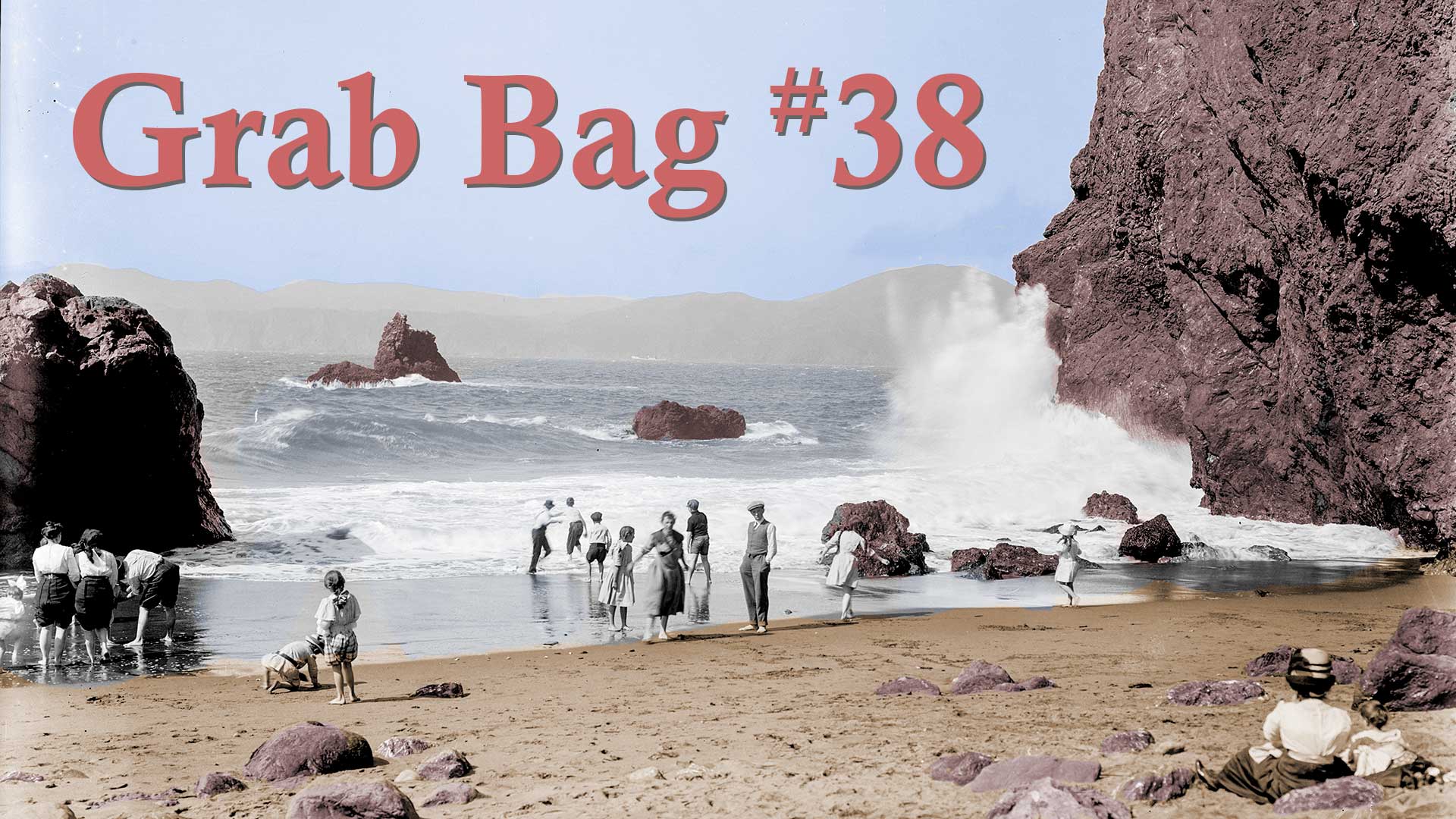
I felt the last Grab Bag was not Grab-Baggy enough, so this time we’re short-attention-span-history-theater, mostly around the water and with special guest star, John Martini. And while the Grab Bag is usually just for Friends of Woody, I’m feeling generous this week. History for everyone!
Crab with a View
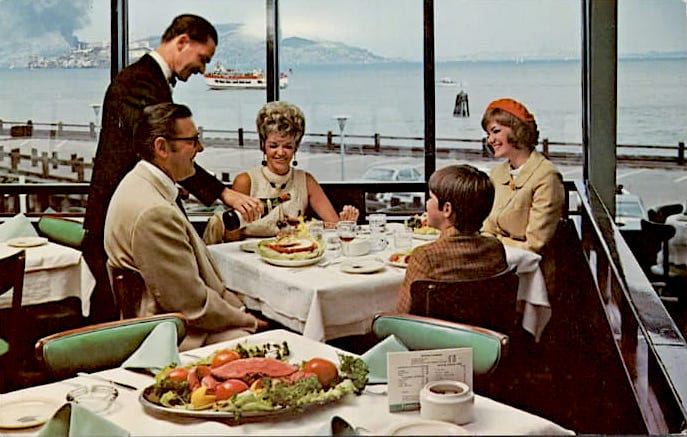
Thanks to Ed F. (F.O.W.) for sharing this bizarre postcard. We have crab, we have wine, and meanwhile a dark plume rises from Alcatraz. Subversive symbolism on the times from your friends at Fisherman’s Wharf.
Alternative transportation
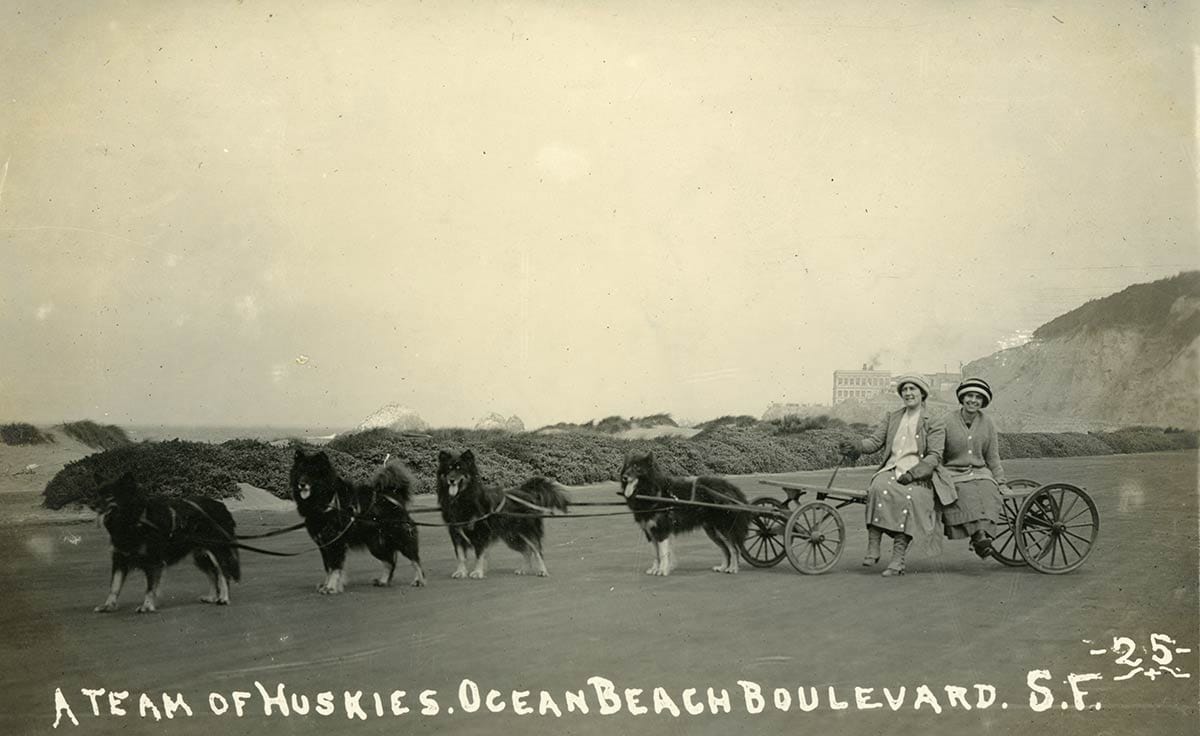
In the theme of one of my favorite subjects, goat carts, here’s a purported husky cart on Great Highway, but I think those are faux huskies...some kind of black collie? Who is with me? Thanks to Frank Mitchell for sharing this great photo postcard image.
Another Waterside Character Namesake
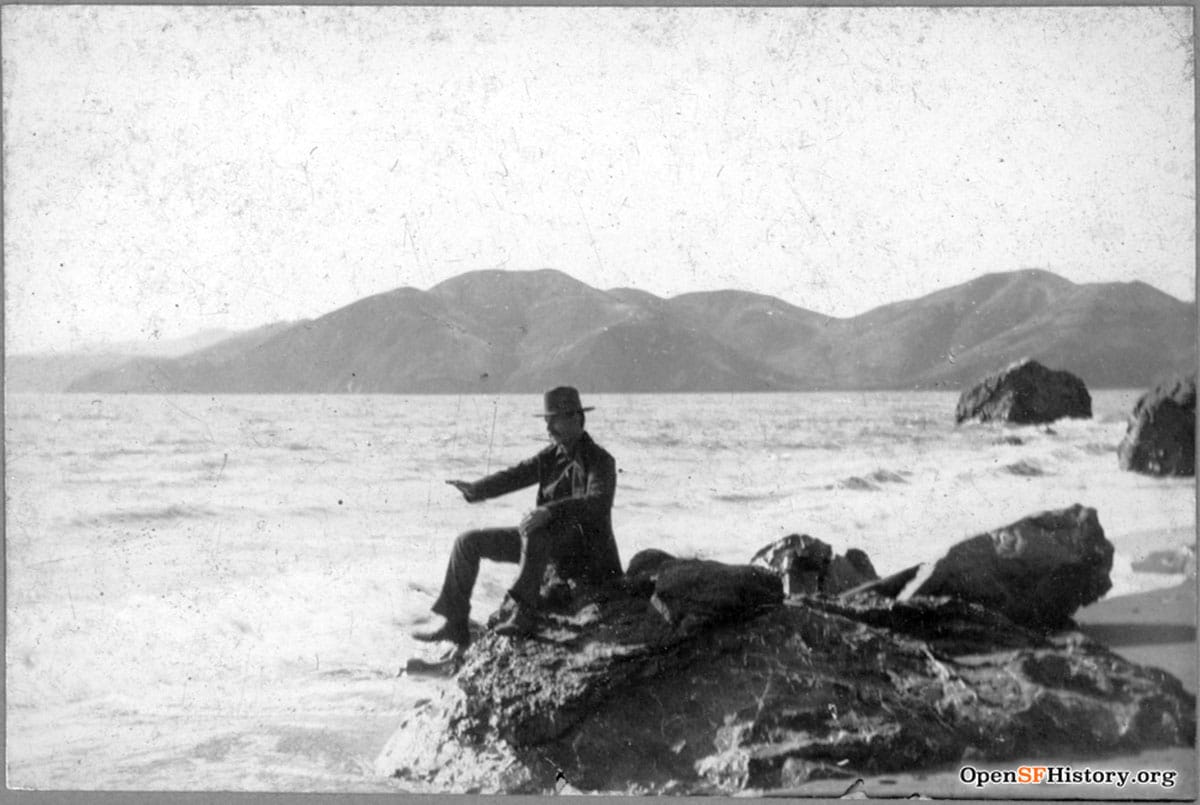
Marshall’s Beach is a spit of sand north of Baker (or, historically “Baker’s”) Beach, and just south of the Golden Gate Bridge. One has a very long hike down the cliffs and we locals always knew it as an unofficial nude beach since at least the 1970s. It’s been a long time since I stumbled on a naked person amid the Marshall’s Beach rocks, but I’m not usually out there on sunny days.
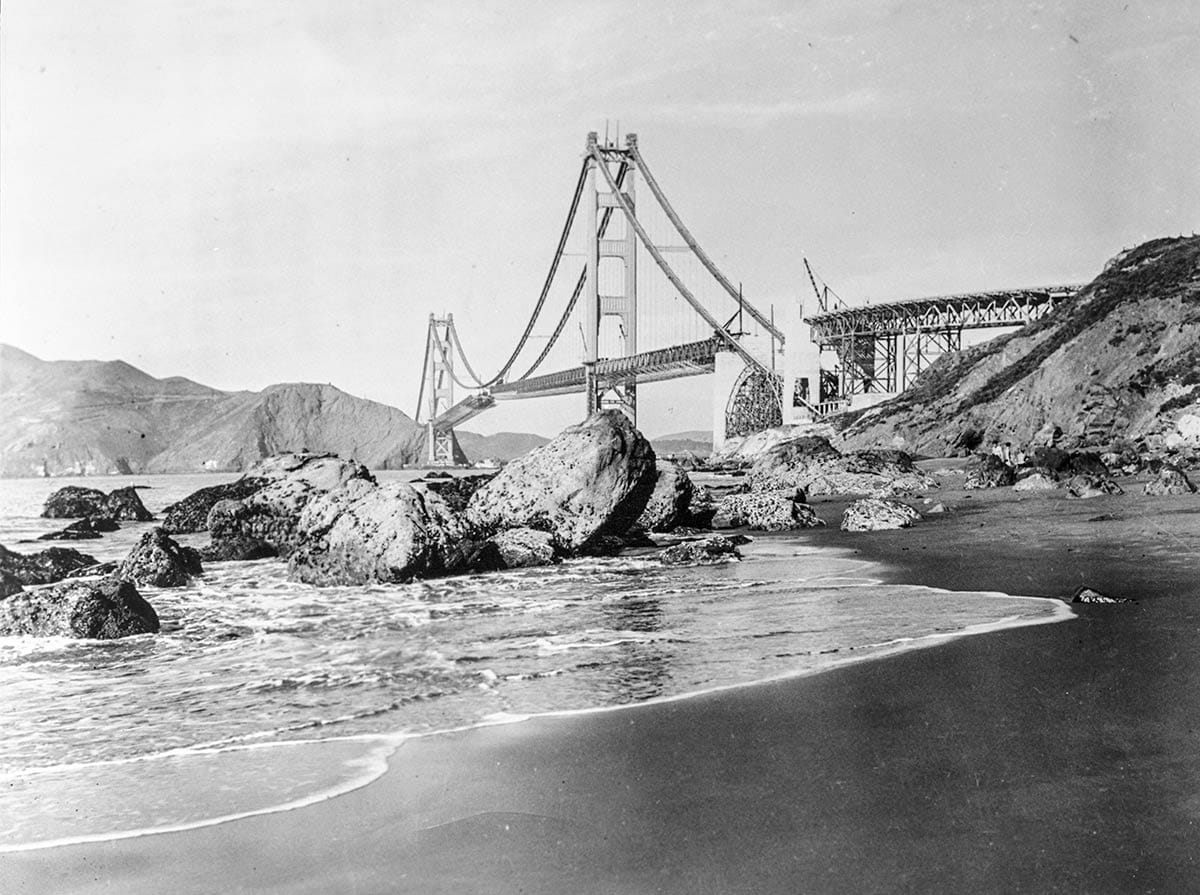
Spurred by the naming of Kelly’s Cove story, Paul Judge (F.O.W.) put out a query on whether anyone knew how Marshall’s Beach got its name. Turns out the story is not far off from how Kelly’s was christened.
From a May 24, 1931 San Francisco Chronicle article:
“Taps will sound across the sands of Marshall’s beach today. A wreath will be hung upon a weathered sign. A flag will unfold in the breeze, an urn will be opened and the ashes within, last mortal remains of Frederick Marshall, picturesque waterfront character, will be cast on the waters of the bay he loved so well.”
Yes, Marshall’s Beach was named for another beach-loving denizen. By occupation a night watchman, Fred Marshall lived in an SRO on Broadway but spent his days by the water beneath the Golden Gate. He was a familiar character who greeted beach-goers from what was described as a cabin there.
Former National Park Service ranger John Martini thinks maybe Marshall could have appropriated an old Army searchlight shelter:
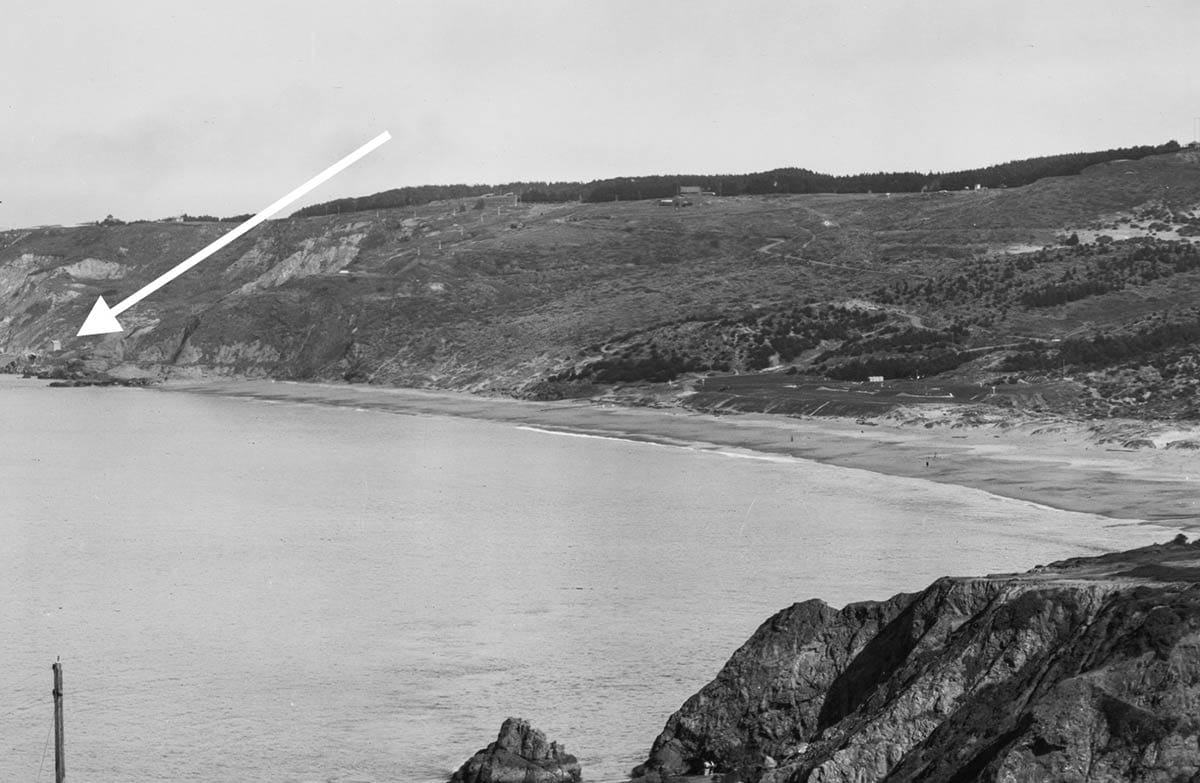
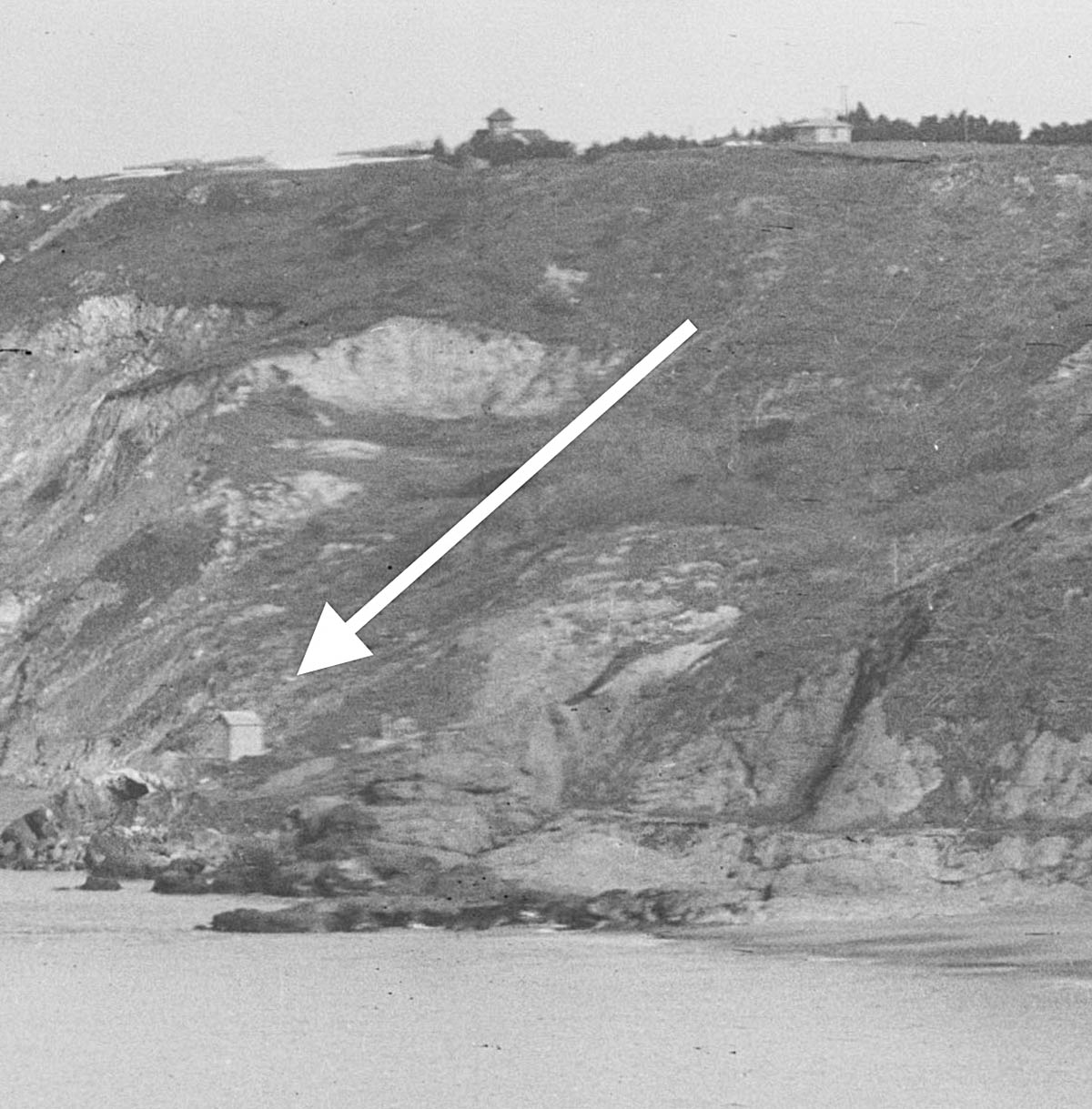
Like Samuel Kelly, Frederick Marshall died from an apparent heart attack. The night watchman checked out reading a book in his bed rather than dramatically on the beach like old Sam.
Oh, and though called a “Nature Lover,” there is no evidence Marshall was a nudist.
The article mentions a weathered sign at the beach. Could there be a photo of it or the sign itself somewhere? Seem improbable? Read on…
Port of Embarkation
I was walking along California Street last week and my eye caught some stenciled lettering on a fence-board:
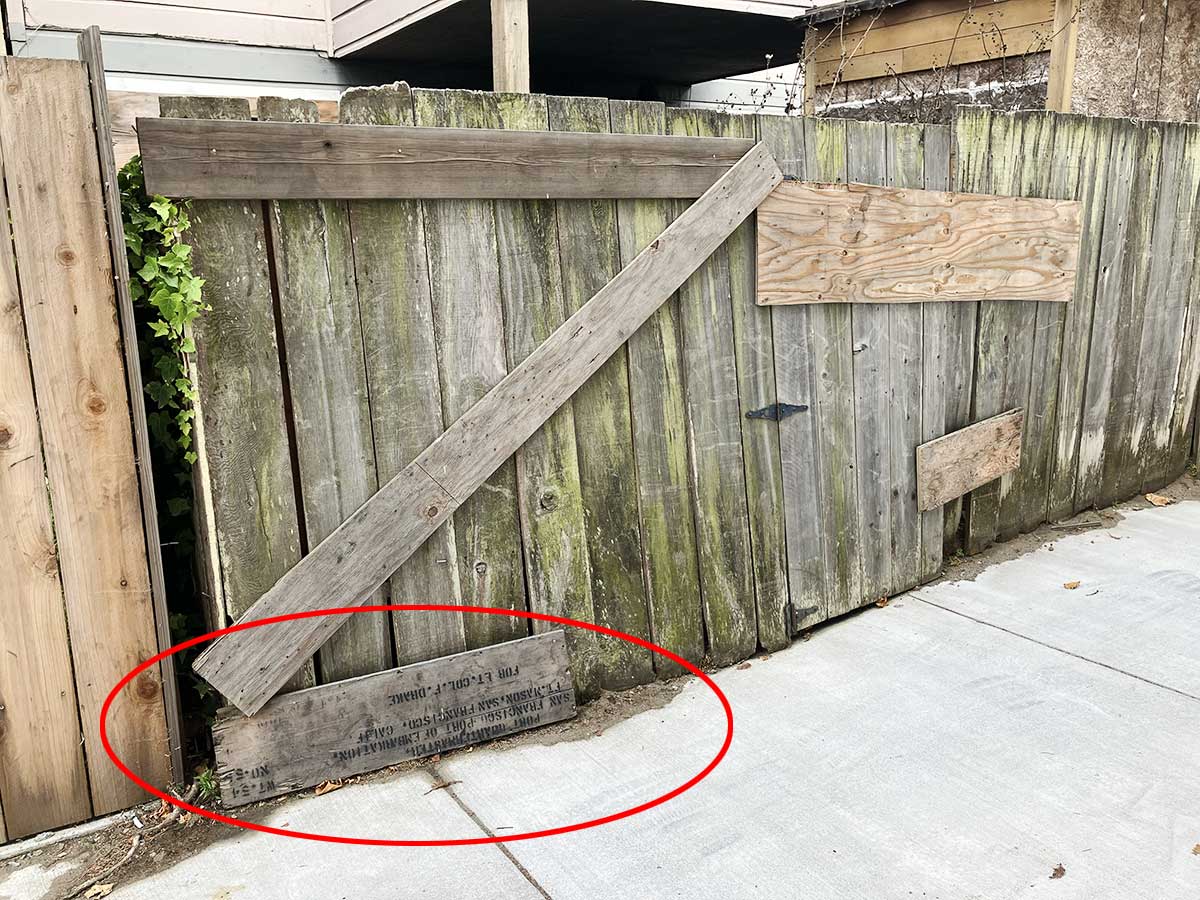
Nosy pedestrian that I am, I walked up the apartment driveway for a closer look:
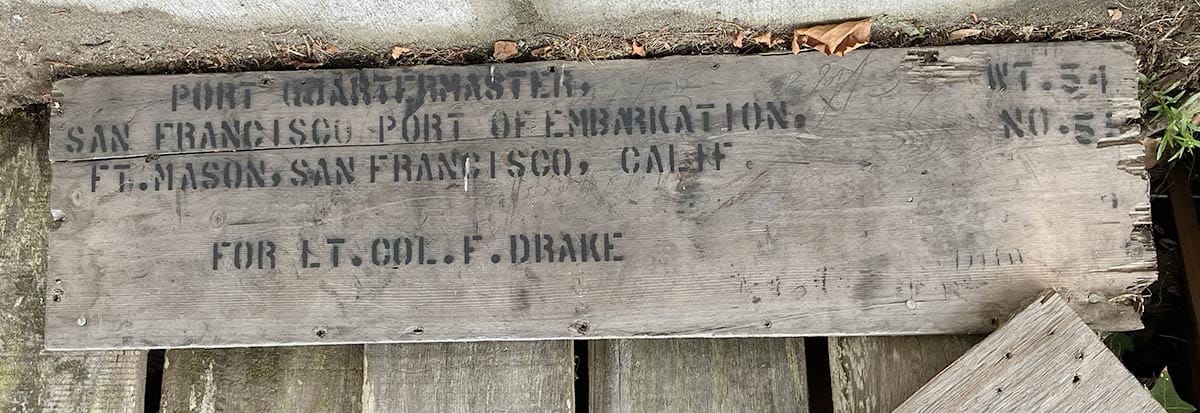
According to John Martini, San Francisco hasn’t been called a Port of Embarkation since at least the 1950s. Someone did a little recycling work which has held up for 70 years or more.
Time to do a little research on Lieutenant Colonel F. Drake?
Wild Waving of Fountain Pens
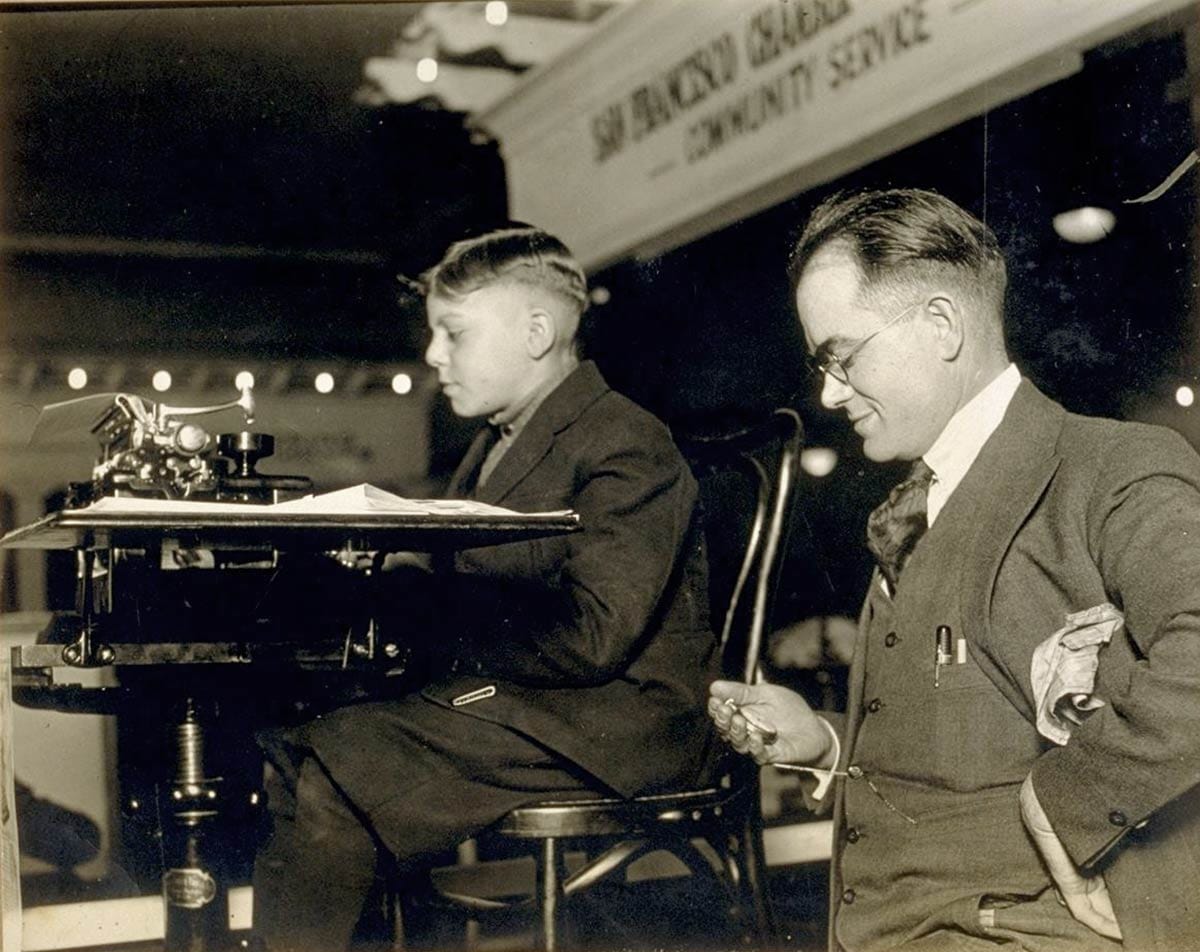
In honor of the Olympic Games in Paris, let us remember the great California State Typing Championship of 1922.
As the highlight event of the week-long San Francisco Business Show, the contest drew 101 young men and women from high schools and business schools across the state to what is today Bill Graham Civic Auditorium in Civic Center.
“Trained like athletes and keyed to a high pitch, the youthful aspirants for the championship trophy are eager for the start and 4,500 onlookers in the balcony are assured 31 minutes of real excitement.”
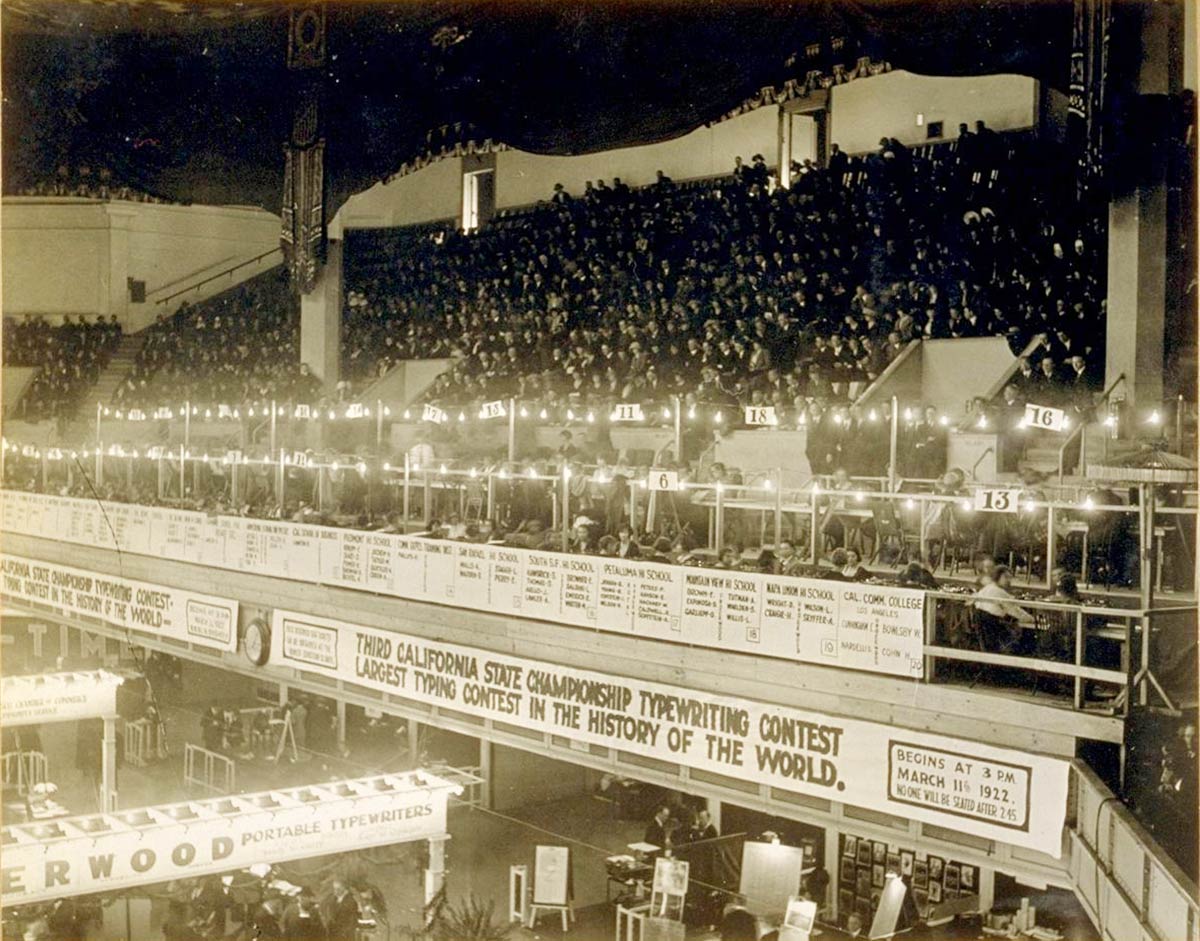
While schools sent their rooting squads, it was considered poor form to cheer aloud. Demonstrations of support were “limited to wild waving of fountain pens and sign language.” (Let’s bring fountain-pen-waving back, shall we?)
Marysville High took top honors by winning the team trophy and having member Miss Mary Sutfin blow away the individual competition.
Sutfin did 95 words per minute, without error, transcribing “strange copy.”
Yeah, but how fast could she text?
Lynn’s Beach
Back to eccentric waterside characters and John Martini... here’s an excerpt from John’s article about a rocky cave at the Golden Gate which was used as quasi-permanent shelter by a series of men we might call “unhoused” today.
Here we have another beach named after a guy, although this time he self-christens and the name didn’t stick
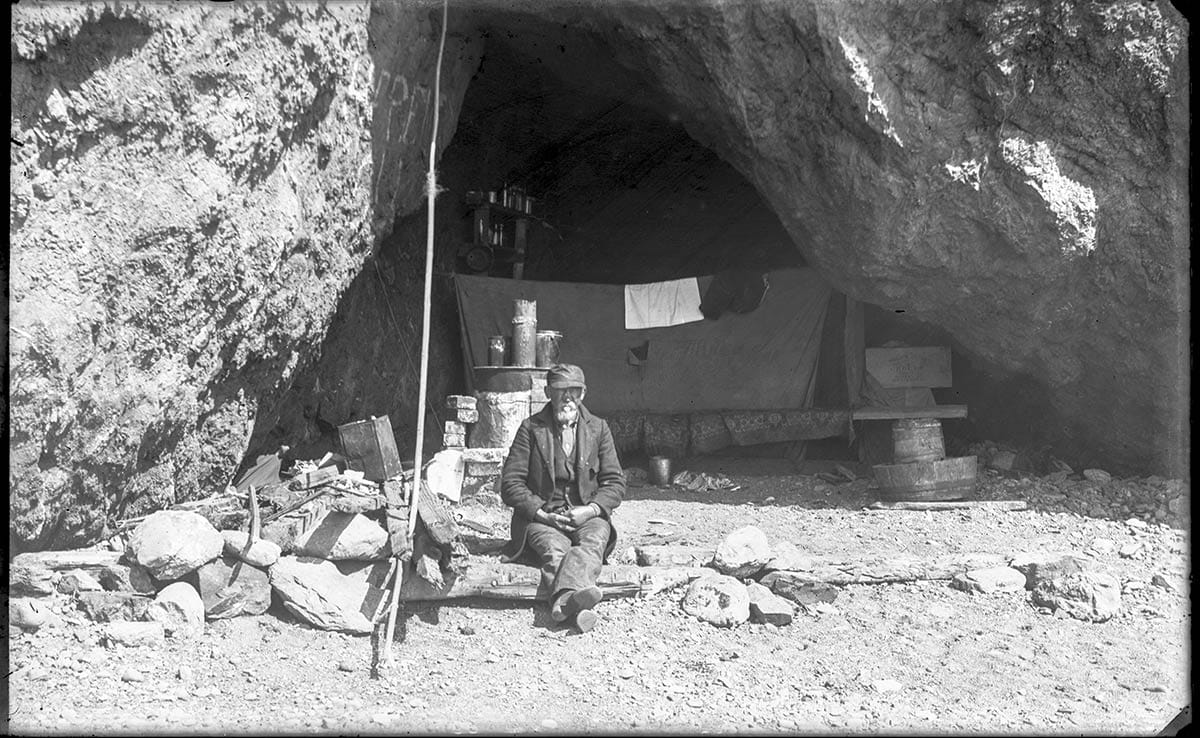
“Lands End is a familiar name to San Francisco residents, who associate the name with the rock-strewn northwest corner of the San Francisco peninsula, an area stretching roughly from Sea Cliff to the ruins of Sutro Baths.
“But few people realize that there’s a geographic feature along this desolate shoreline actually called Lands End, and that over the decades it has been home to a series of Lands End hermits.
“The physical feature named Lands End is a finger-like rocky promontory extending into the Golden Gate just below the Veterans Administration hospital. Nestled into the windblown western face of the promontory is a small cove and pocket beach known to locals as Lands End Beach or Mile Rocks Beach, due to its proximity to both landmarks. A deep cleft in the cliff face, now mostly obscured by sand and rocks, once formed a sheltered—if damp—refuge from the elements.
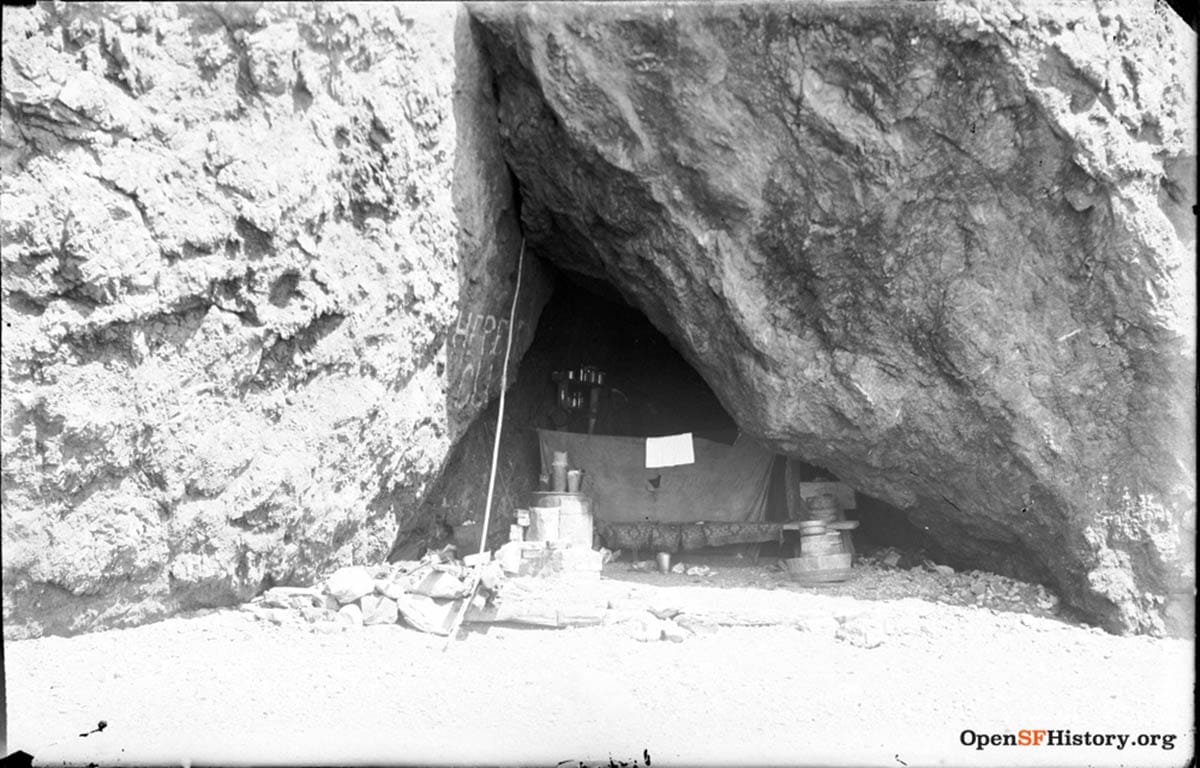
“Sometime in the late 1870s, despite its remoteness, a homeless man named Edward Lynn took up housekeeping in the rock cleft at Lands End Beach. He constructed a perilous trail to the cove, which he modestly named ‘Lynn’s Beach.’
“Beginning in 1888, he experienced an upsurge in visitors when the famed Ferries & Cliff House Railroad began running along the precipitous cliffs flanking Lands End. Not long after the line’s opening, a shed-like waiting room was erected alongside the railroad tracks for hikers headed to and from Lynn’s little beach.
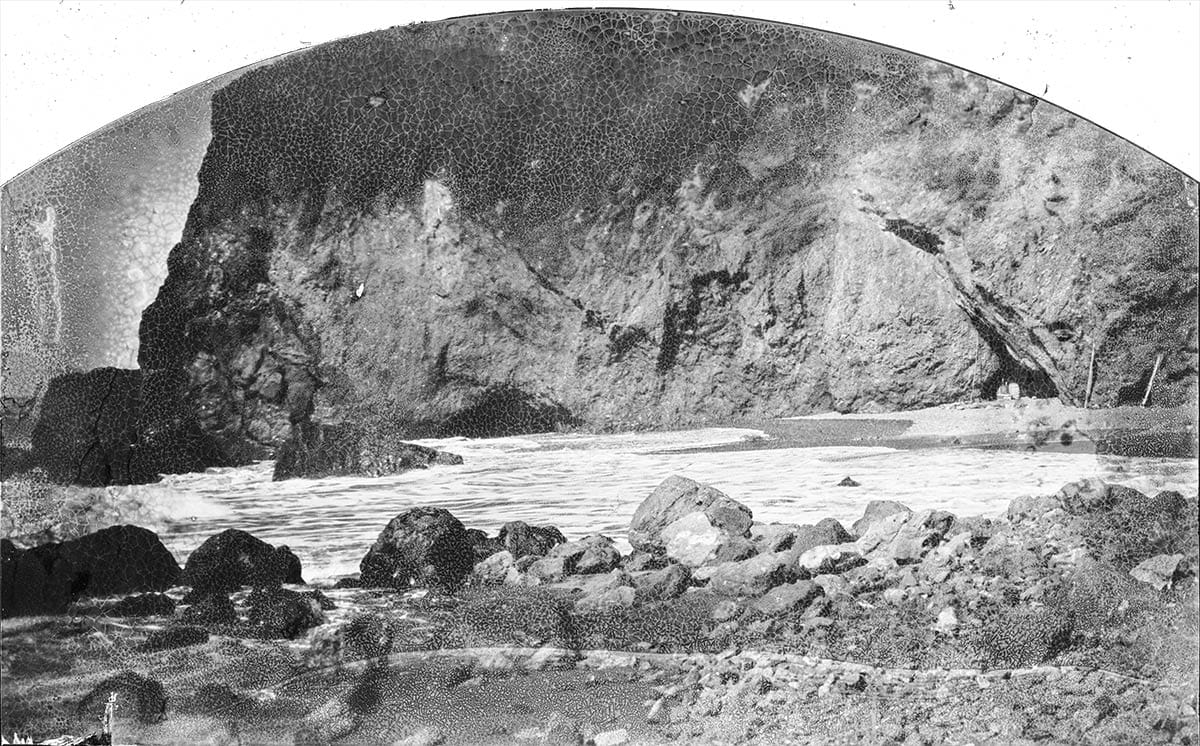
“The San Francisco Call ran an article about Lynn in the September 13, 1896 edition titled ‘Has Turned His Face Toward The Sad, Sad Sea,’ complete with illustrations of how he had converted the shallow cave into a residence.
“‘Lynn has built a bulkhead across the front which is sufficiently high to keep out the spring tides and there is a step of rock and plank to reach the top of this, built of stray planks that have floated in. Just inside the line of this breakwater there is a rude stove, with a tall pipe, and on this Lynn cooks his meals. He was preparing a stew of beef and onions. Behind this there is a long bench on which are a washtub, tin pans and odd and ends, and immediately back of this is stretched across the mouth of the cave a black striped blanket, which shuts out from view the interior.’
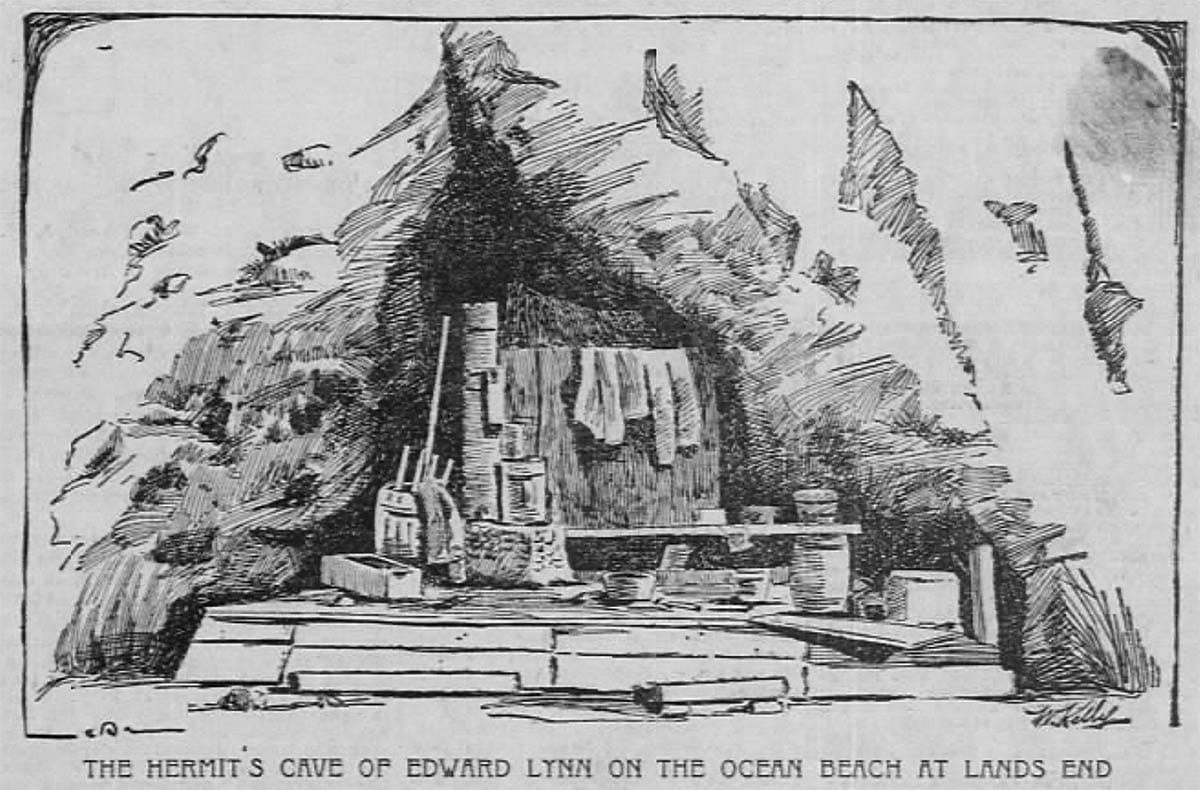
“Lynn had once been a trained machinist working for Fulton Iron Works, but had invested wildly and badly. He had lost his savings and his house, and then his wife died.
“In those pre-social-services days, Lynn was left without any financial reserves or source of support. He told the Call reporter, ‘twelve years ago, when this was all a wilderness, I came out in this section, having bid farewell to society, and for a time lived in a little cabin that belonged to Mr. Sutro and for which I paid him $1 a month rent. It was not much, still it was rent. Then I came down here [to the beach] and settled, and pay no rent.’
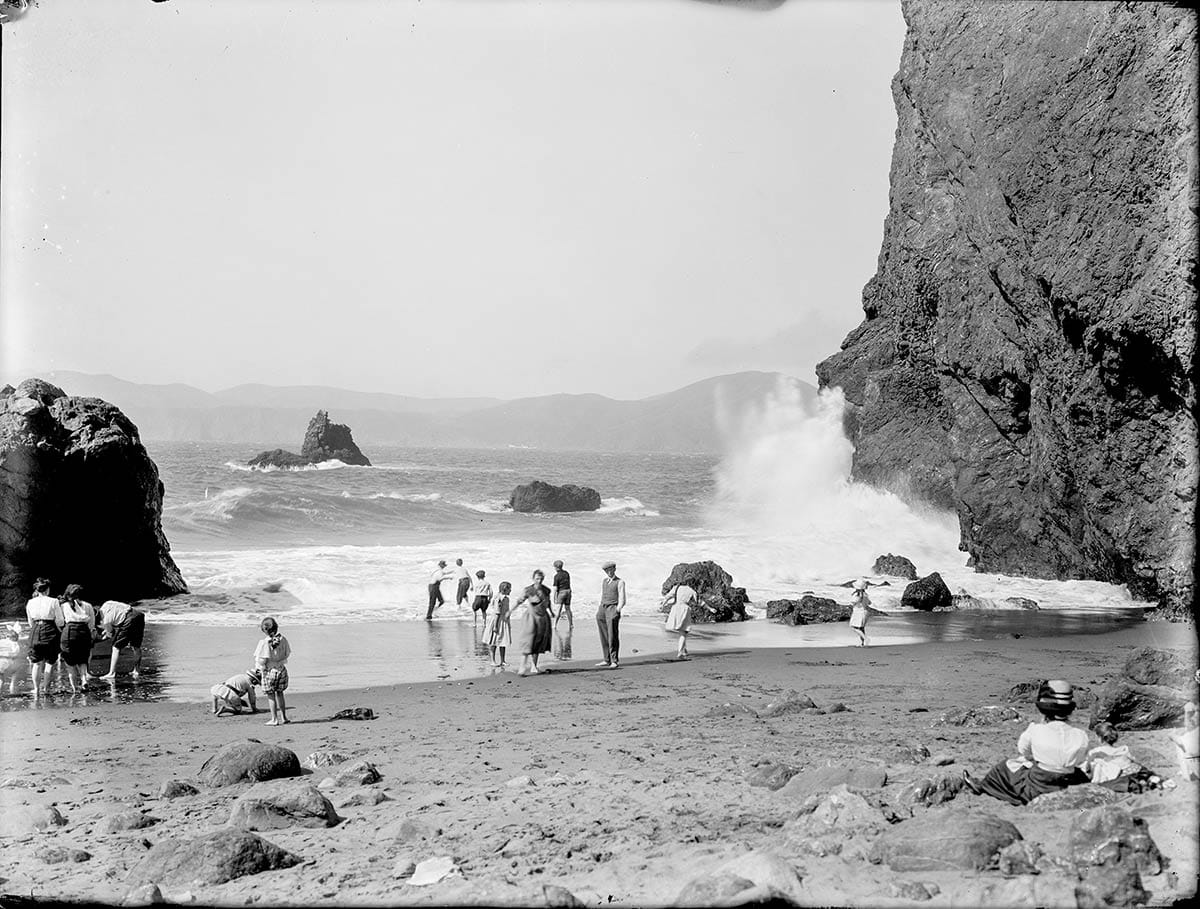
“The Call journalist concluded with Lynn’s description of how he survived in the near-wilderness of Lands End:
“‘How do I live? Well, I gather mussels and sell them, and once in a while I get a job on the [rail]road. Then there are a great many people who come down here and have lunch, and as many bring more than they can eat they hand me what is left over, and in that way I manage to get along. I do not seek the society of those who come here, nor the society of any one else, but if people address me I answer them with all the civility at my command, but no more society for me—I have soured on society.’
“...if people address me I answer them with all the civility at my command, but no more society for me—I have soured on society.”
“No one recorded how long Lynn stayed in his cleft overlooking the beach, but a San Francisco Chronicle article about Lands End on December 4, 1898, relates that he’d departed mysteriously:
“There is a deep cave with an arched entrance…here, many years ago, a hermit took up his residence, constructing a rude fireplace of stone beside it and closing the entrance with a bright-hued blanket…One day he disappeared, and there are none who seem to have ever solved the riddle of his fate.”
The rest of John’s article can be found on the OpenSFHistory web site.
Woody Beer and Coffee Fund

Great thanks to Professora Em (F.O.W.) and Mike J. (F.O.W.) for their contributions to the world’s only Woody Beer and Coffee Fund. A team of lawyers is right now working on trust paperwork to ensure that IPAs and lattes get in the right hands in the unlikely event of my death or mysterious disappearance. (Of course their fees may gulp down any quaffs left in the corpus...)
So buy your round now or claim your share in pint, mug, or demitasse. When are you free?
Sources
“Nature Lover’s Ashes to be Cast into the Sea,” San Francisco Chronicle, May 24, 1931, pg.
“150 Enter Contest at Business Show,” The San Francisco Journal and Daily Journal of Commerce, March 9, 1922, pg. 7.
“School Girls Show Speed in Typing Events,” San Francisco Chronicle, March 12, 1922, pg. 12.
“Has Turned His Face to the Sad, Sad Sea,” San Francisco Call, September 13, 1896, pg. 19.

